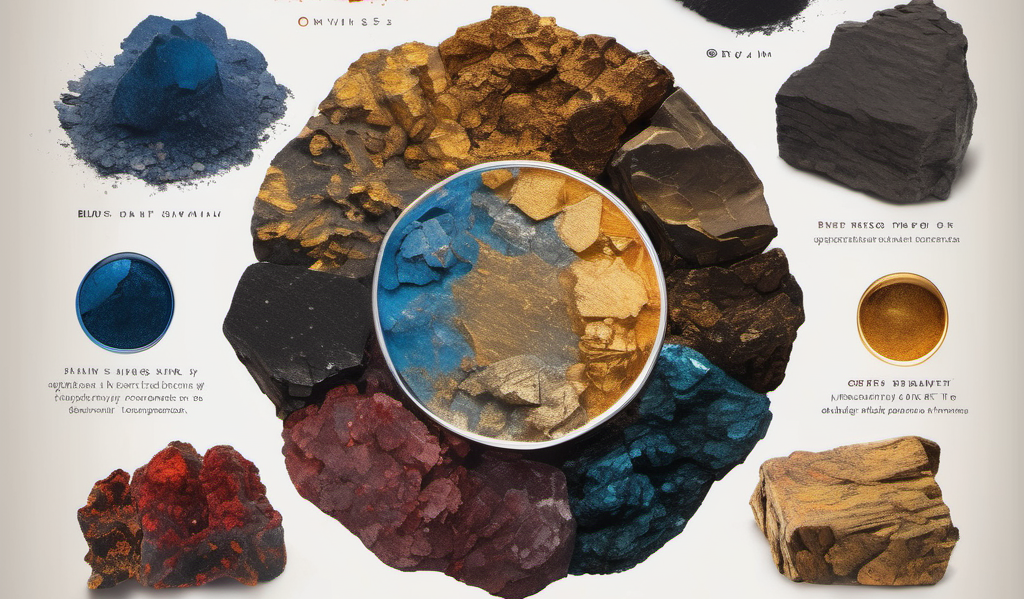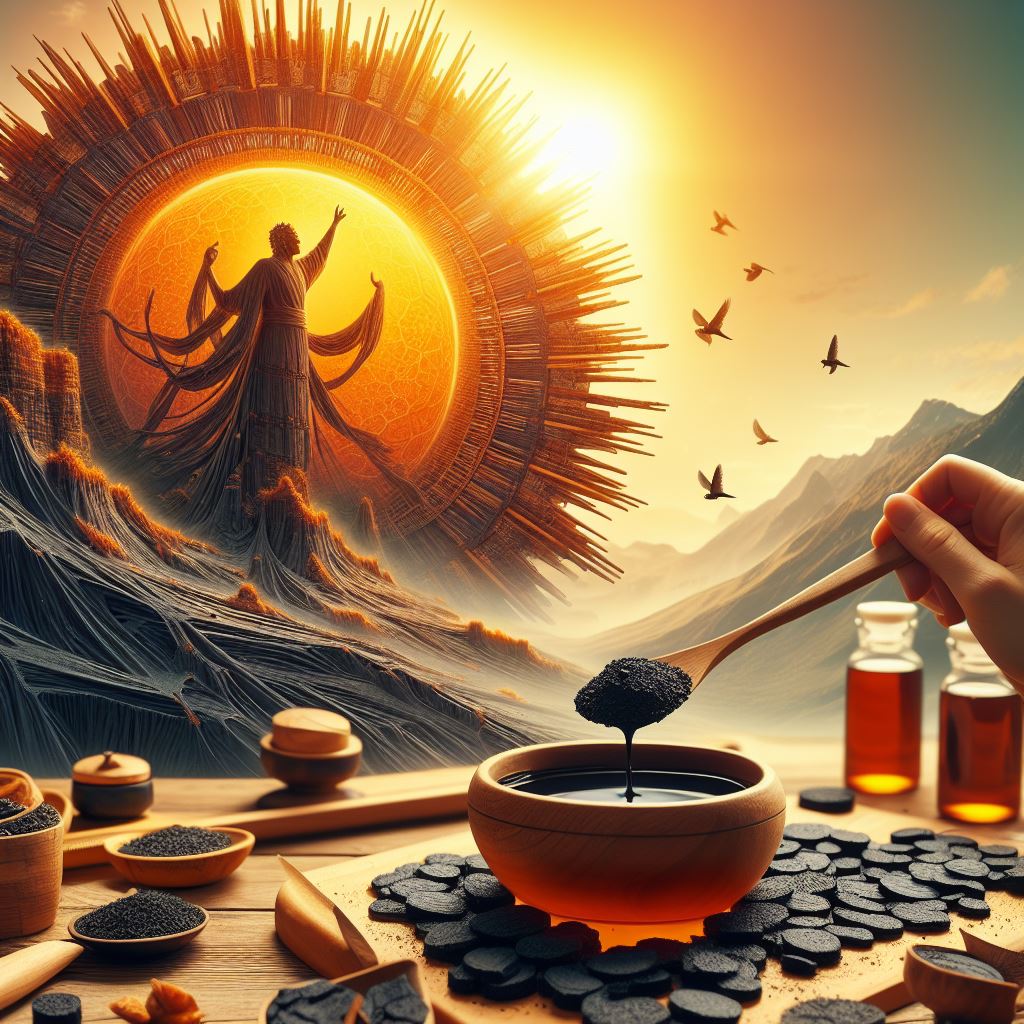

Traditional medicine, endorsed by the World Health Organization (WHO), offers a wealth of health practices derived from natural sources. Among these, Shilajit, deeply rooted in Ayurvedic and Siddha medicine, emerges as a remarkable mineral substance. This blog post aims to delve into the essence of Shilajit, exploring its origins, medicinal properties, and ongoing global research that has earned it the title of the “best Shilajit.”
Shilajit, a potent mineral substance with centuries-old roots in traditional medicine, manifests in a captivating array of forms, each distinguished by its mineral composition and unique properties. The first type, Copper (Tamra) Shilajit, unveils itself with a distinctive blue color, making it easily recognizable. This variant carries its own set of mineral benefits, contributing to the rich tapestry of Shilajit’s therapeutic spectrum.
Moving on, the second type, Silver (Rajat) Shilajit, stands out with its notable white color. Beyond its aesthetic appeal, this variant brings its own set of properties, adding depth to the diverse world of Shilajit. Its unique characteristics make it a fascinating subject for exploration, drawing attention not only for its color but also for its potential health benefits.
The third type, Gold (Sauvarna) Shilajit, takes on a resplendent red color, setting it apart in the spectrum of Shilajit varieties. Beyond its visual allure, Gold Shilajit carries its medicinal properties, contributing to the holistic approach of traditional medicine. This variant’s distinct hue hints at the richness it brings to the mineral-rich landscape of Shilajit.
Last but not least, the fourth type, Iron (Lauha) Shilajit, claims its place as the widely used and ideal variant for healing, recognized by its blackish-brown hue. This type embodies the essence of Shilajit’s therapeutic potential, with its deep color reflecting the richness of its mineral composition. Widely acknowledged for its healing properties, Iron Shilajit holds a key position in traditional medicinal practices.
In essence, the diverse palette of Shilajit types, from Copper to Iron, presents a fascinating exploration of nature’s offerings. Each variant, distinguished by its color and mineral composition, adds a layer of complexity to the understanding of Shilajit’s medicinal properties, making it a subject of both visual and therapeutic intrigue.
Shilajit’s therapeutic potential stems from diverse bioactive compounds, with fulvic acid and humic substances standing out. In traditional Indian medicine, Shilajit is a prominent rasayana, promoting overall well-being and preventing ailments. Its applications span genitourinary diseases, diabetes, chronic bronchitis, anemia, and more. In Russia, Shilajit is prescribed for disorders like angina, jaundice, and nervous diseases.
Globally, Shilajit has gained attention, with research highlighting its immuno-stimulant and anabolic properties. Bioactive dietary supplements and food additives containing Shilajit have been patented and manufactured, particularly in Tajikistan. Its potential in therapeutic applications has led to its inclusion in various formulations designed for specific health benefits.
Understanding Shilajit’s diverse types is crucial for consumers. The two main categories, gomuthira Shilajit and karpura Shilajit, offer distinct characteristics. Gomuthira Shilajit, further classified based on the predominant metal ore, presents variations such as gold ore, silver ore, copper ore, and iron ore Shilajit, each addressing specific health imbalances.
In the journey to harness the benefits of Shilajit, a crucial aspect for consumers lies in understanding its diverse types. Shilajit can be broadly categorized into two main types: gomuthira Shilajit and karpura Shilajit, each presenting distinct characteristics. Gomuthira Shilajit, a category that holds significant importance, is further classified based on the predominant metal ore. This classification gives rise to variations such as gold ore, silver ore, copper ore, and iron ore Shilajit. Each variant is thoughtfully designed to address specific health imbalances. Whether you seek the vibrant energy associated with gold, the purity linked to silver, the strength attributed to copper, or the healing properties of iron, understanding these variations empowers consumers to make informed choices tailored to their individual health needs. Exploring the rich tapestry of Shilajit types opens doors to a personalized approach to well-being, rooted in the ancient wisdom of traditional medicine.

The Aftabi purification process, derived from the Persian word “Aftaab,” translating to sun, stands as a testament to the age-old wisdom encapsulated in traditional medicine. In this method, Shilajit undergoes a meticulous drying process under the sun, extending over a considerable duration. The significance of Aftabi Shilajit lies in its superiority, a belief rooted in the understanding that solar exposure not only rids the substance of impurities but also amplifies its overall effectiveness. The radiant energy of the sun infuses Aftabi Shilajit with a perceived superior potency, making it a coveted choice among those seeking the finest herbal supplements. As the sun’s rays weave their transformative energy into the fabric of Shilajit, the result is a product believed to possess heightened therapeutic properties, aligning seamlessly with the principles of traditional health practices.

In the realm of Shilajit, the Aatshi or Agni purification method stands out as a distinctive approach. This process involves the use of artificial heat, typically derived from fire, for the dehydration of Shilajit. While it’s acknowledged that Agni Shilajit may experience a potential potency loss of approximately 20% compared to its counterpart, Aftabi, it remains a compelling option for health enthusiasts. Despite this minor trade-off, Agni Shilajit retains a spectrum of health benefits, making it a viable choice for those seeking the advantages of this herbal supplement. The use of artificial heat in the purification process brings its own set of advantages, appealing to individuals who may prioritize convenience or have specific preferences. As consumers navigate the diverse offerings of Shilajit, understanding the nuances of Aatshi or Agni Shilajit provides valuable insights for making informed choices in pursuit of optimal well-being.
Ayurvedic practitioners stress the importance of the purification process in enhancing Shilajit’s therapeutic properties. Aftabi Shilajit is considered more potent due to the natural energy absorbed during solar drying, aligning with Ayurvedic principles of harnessing the sun’s transformative energy for optimal health benefits.
When embarking on the journey to select the most suitable Shilajit, delving into the intricacies of the purification process becomes paramount. Both Aftabi and Agni Shilajit stand as contenders, each with its unique set of health benefits. The decision between the two often boils down to individual preferences and beliefs. For those placing a premium on perceived higher potency, Aftabi Shilajit, purified under the sun’s natural energy, may emerge as the preferred choice. On the other hand, individuals valuing convenience and specific preferences might find the attributes of Agni Shilajit, purified through artificial heat, more fitting to their lifestyle. As consumers navigate this decision-making process, understanding these distinctions in the purification methods ensures an informed choice aligning with personal health goals and values. Selecting the right Shilajit thus becomes a thoughtful and personalized endeavor, integrating traditional wisdom with individual preferences for optimal well-being.
In the tapestry of traditional medicine, Shilajit emerges as a potent force, deeply rooted in Ayurveda. From Copper to Iron Shilajit, each variant tells a unique story of healing potential. Its global recognition for immuno-stimulant properties highlights its relevance in modern health. Choosing between Aftabi’s solar-infused potency and Agni’s convenience-driven benefits is a personal journey, blending ancient wisdom with individual preferences. Ayurvedic principles emphasize the transformative energy harnessed during purification. In a nutshell, Shilajit invites us to connect with nature’s bounty, offering a holistic approach for balanced well-being, where each variant becomes a step toward optimal health.
Discover the transformative power of Shilajit, carefully sourced and curated for your vitality. Embrace a journey of holistic health with nature’s rejuvenating essence. Elevate your well-being with Xomoashro.